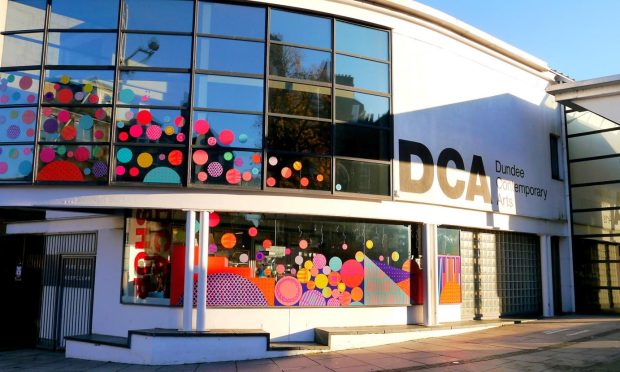Scotland’s arts face mounting challenges.
As funding dwindles, creative careers are becoming increasingly inaccessible for many musicians and behind-the-scenes talents, particularly those from underrepresented backgrounds.
With less support, the arts risk becoming more exclusive, side-lining vital voices and perspectives.
This summer, Creative Scotland announced the closure of the Open Fund for Individuals, further limiting opportunities for emerging artists.
Although the fund reopened in October – after First Minister John Swinney announced in his Programme for Government that resources were available to aid its return – the initial closure caused disruption for those who rely on such funding to break into the industry.
Most importantly, it highlighted how restricted resources, often directed towards established organisations, are making it increasingly difficult for working-class, migrant, and minority musicians to secure the support and recognition they deserve.
‘Lack of diversity’
Without access to creative funding, many artists from marginalised groups will struggle to break into the industry, inadvertently reinforcing a cycle of exclusion for those who lack the financial means to fully pursue their craft.
The overwhelming demand for the fund – illustrated by the additional 819 applications, totalling £11.9 million, that Creative Scotland received after the initial closure announcement – shows the ongoing disparity between resources available and the needs of emerging artists.
Even though the fund eventually reopened, this overwhelming demand underscores the necessity of funding.
The closure of the fund – a vital resource for emerging grassroots artists in Scotland – highlights how creatives from underrepresented backgrounds are often the first to face cuts when budgets tighten.
Despite the significant impact, there’s often little discussion about the lack of diversity in the decision-making bodies responsible for these cuts.
Too often, funding decisions are made by those distant from the communities that would benefit most.
This detachment risks perpetuating the cycle of exclusion, with marginalised voices being overlooked.
Behind the scenes, the people shaping the arts landscape are rarely visible, leaving the public unaware of how these choices affect the overall cultural fabric of Scotland’s creative arts scene.
The impact of funding cuts extends beyond individual artists but to the arts scene as a whole.
Often, the cuts crisis is felt most by the organisations closest to communities, which are doing the crucial work to tackle under-representation.
For example, last year, the CEO of Dundee Contemporary Arts warned the future of the centre was uncertain.
Looking at their exhibitions held over the last year, we see a higher representation of arts from BIPOC [Black, Indigenous and people of colour] backgrounds.
These vital spaces need to be protected.
Without adequate support for grassroots initiatives, the opportunity to nurture emerging talent and fresh perspectives diminishes.
This, in turn, leads to the diversity of content available to the public to become unnecessarily limited.
This narrowing of perspectives means the arts lose out on the unique experiences and stories that could offer a more complete and diverse cultural experience.
‘Marginalised backgrounds’
However, there are a few groups and initiatives that are trying to change this.
For instance, We Are Here Scotland hosted an arts festival in Aberdeen this summer, offering a platform for diverse, underrepresented voices.
These initiatives show that it is possible to shift the narrative, but they need more support, funding, and visibility to make a broader impact.
Without organisations like We Are Here Scotland, it becomes harder for emerging talent to explore and express their authentic sound, limiting their ability to fully develop their voices and musicianship.
The long-term consequences of limited funding are significant as without proper support, emerging talent from underrepresented backgrounds may never have the opportunity to fully develop or make their mark on Scotland’s arts scene.
In the absence of sustained investment, Scotland risks losing out on the next generation of innovative artists leaving the arts scene stagnant and less reflective of the diverse society it aims to represent.
For many musicians, especially those from marginalised backgrounds, it’s not just about funding—it’s the lack of support behind the scenes.
I know this from personal experience as a singer/songwriter and musician who struggled to find the resources to pursue music.
It wasn’t until I received funding from a music charity that I was finally able to get back into the studio and create the music I had put on hold.
Without that support, I might never have been able to continue developing myself as an artist.
Unfortunately, opportunities like this are becoming increasingly uncertain, as funding is at a constant risk due to ongoing budget cuts.
Far too many artists from backgrounds like mine don’t have the means to pursue their creativity, and without the proper support, Scotland risks losing voices that could redefine the creative landscape.
If Scotland’s arts are to truly reflect the diversity of its people and thrive for future generations, it’s important that funding remains accessible to all artists, not just those already established.
Ensuring that organisations like Creative Scotland are adequately supported is vital to maintaining their ability to help nurture and empower emerging talent.
Through adopting funding models that promote inclusivity and sustainability, Scotland can continue to build a vibrant, diverse, and flourishing arts community that continues to inspire and enrich generations to come.
The Courier is a proud partner in the Pass the Mic media project, a platform which aims to raise the profiles of women of colour in Scotland and give a voice to their expertise.
The project was founded in 2019 and works with the women and organisations behind Gender Equal Media Scotland with support from Women 50:50.













Conversation